12 Things to Do in Puno and Lake Titicaca, Peru
In this blog post you can read about all the best things to do in Puno and Lake Titicaca, a place you really shouldn’t skip during your trip to Peru.
In this guide, we’ll tell you how to get to Puno and how long you ideally need to spend there to see the best of it. Of course, the guide wouldn’t be complete without showing you all the best things to do there, along with many of our tips from personal experience.
If you’d like to see our adventures in Puno and Lake Titicaca, then make sure to watch our video on YouTube. For more Peru videos, check out the Peru Playlist on our YouTube channel.
Disclosure: This post may contain affiliate links, which means we may receive a small commission if you click a link and purchase something. Clicking these links won’t cost you anything, but it will help us to keep this site up and running! Learn more about our affiliate policy.
Introducing Puno and Lake Titicaca
Located on the shores of Lake Titicaca, about 3,830 m (12,556 ft) above sea level in south-eastern Peru, is the city of Puno. The city was founded on the 4th of November, 1668 by the Spanish.
The first group that settled in the region known as ‘El Altiplano’ were the Pucara culture. After them, the Tiahuanaco (or Tiwanaku) civilization ruled in this area before the Kollas and Lupacas arrived. A group of the decaying Tiahuanaco culture then travelled further north and formed the Empire of Incas in Cusco.
After the Incas defeated the Kollas, they started to rule ‘El Altiplano’. Later, when Spain conquered Peru, this area became a mining region. Unfortunately, most natives lived in poor conditions and whilst the economic situation has improved, many still live in poverty.
Puno is actually known as the folklore capital of Peru. There are over 300 different local dances that represent old traditions inherited from the Incas and the Spanish colony.
Today, one of Puno’s main industries is tourism due to Lake Titicaca and other Inca and Pre-Inca ruins in the vicinity.
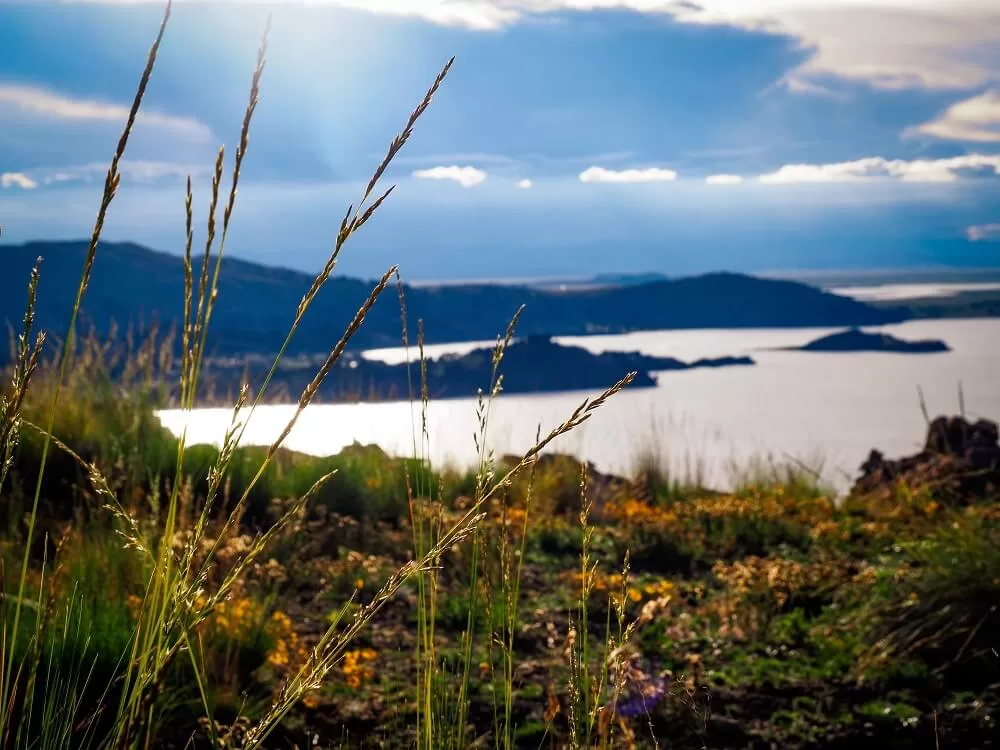
Lake Titicaca
Straddling the border between Peru and Bolivia is Lake Titicaca. Covering 3,200 square miles, it is one of South America’s largest lakes. Sitting at 3,810 m above sea level, Lake Titicaca is also considered the highest navigable body of water in the world.
The lake is believed to be shaped like a puma hunting a rabbit. Even the name, Titicaca, comes from the Aymara word ‘Titi Khar’ka’ which means ‘Rock of the Puma’.
It’s often called the ‘Birthplace of the Incas’ or the ‘Birthplace of the Sun’. Apparently, the first Inca king called Manco Capac, was born on Lake Titicaca.
Lake Titicaca has national reserve status and has been designated a Ramsar Site (Wetland of International Importance) since 1998.
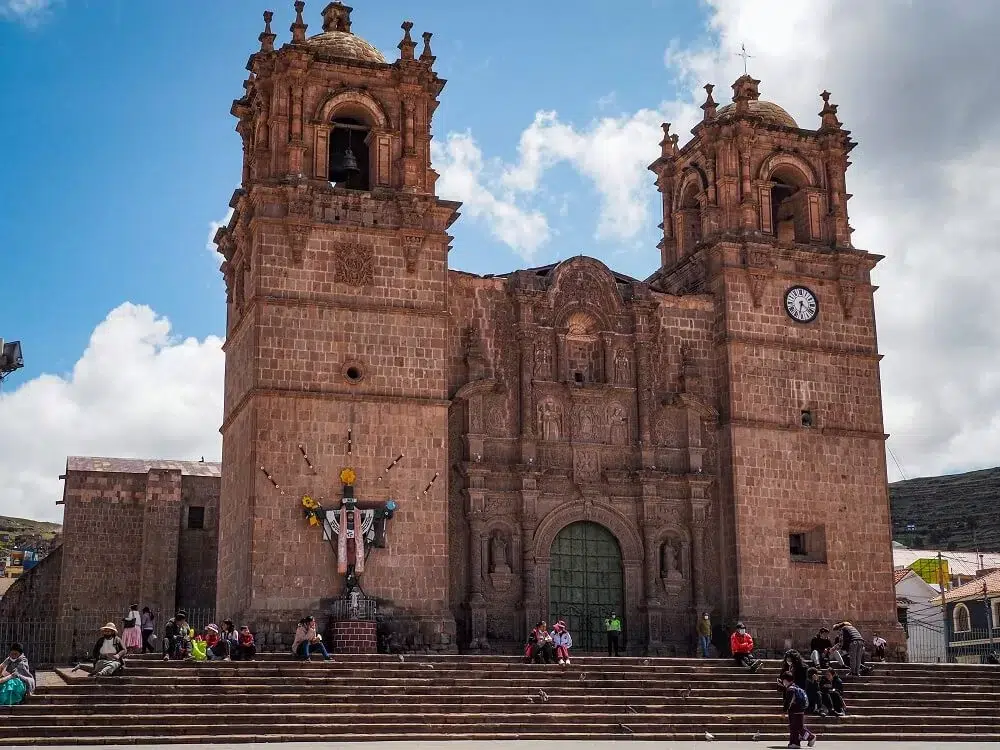
12 Things to Do in Puno and Lake Titicaca
Compared to other cities in Peru, the number of things to do in Puno itself isn’t long. However, there are quite a few unique things you can do on Lake Titicaca and in the surrounding area that will make your visit worthwhile.
1. Check Out the Cathedral of Puno (La Catedral de Puno)
Located at the Plaza Mayor de Puno is the impressive 18th century Puno Cathedral. It is also known as the Cathedral Basilica of Puno or the Cathedral Basilica of San Carlos Borromeo.
It was built by the Peruvian builder Simón de Asto and the main material used for its construction was stone. Apparently it was built on an ancient ceremonial place called ‘Supay Kancha’ which means something like the ‘Devil’s enclosure’.
The Baroque style cathedral has been a Cultural Historical Heritage of the Nation of Peru since 1972. You can admire it from the outside or you can check out its interior too where you can see paintings from different schools.
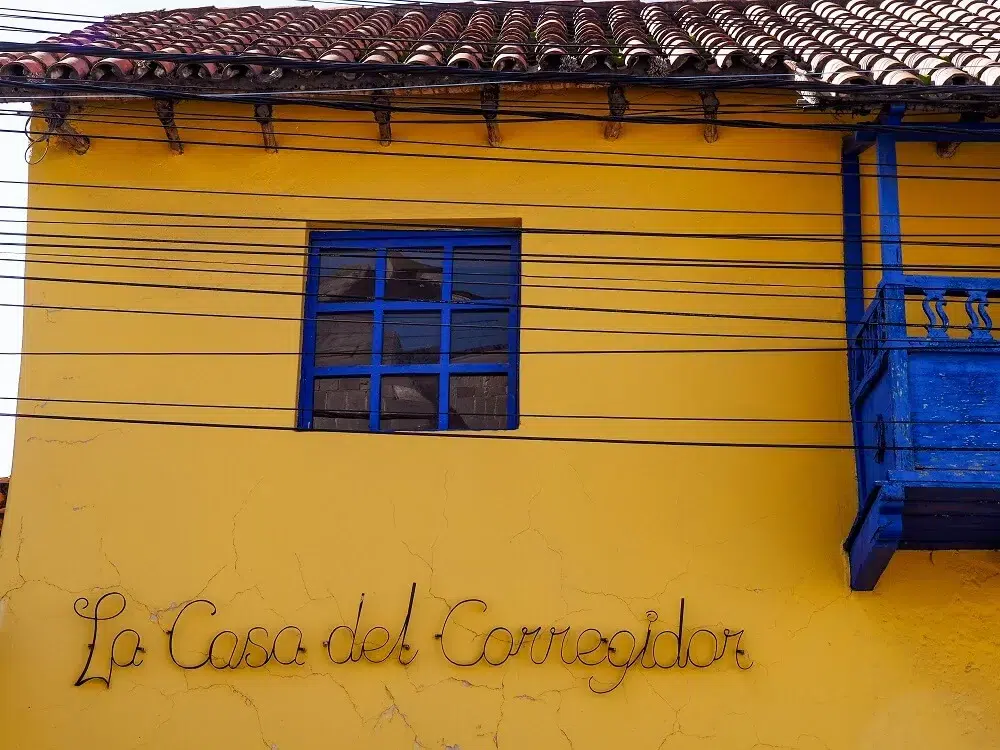
2. Visit La Casa del Corregidor (The Mayor’s House)
Right next to Puno Cathedral is the unmissable bright yellow and blue building called La Casa del Corregidor. This 17th Century building is one of the oldest colonial houses in Puno.
It used to be the region’s general governor’s house, who was responsible for gathering taxes and performing other duties for the Spanish.
Today, the former governor’s house has an exhibition, an arts and crafts shop and a lovely café.
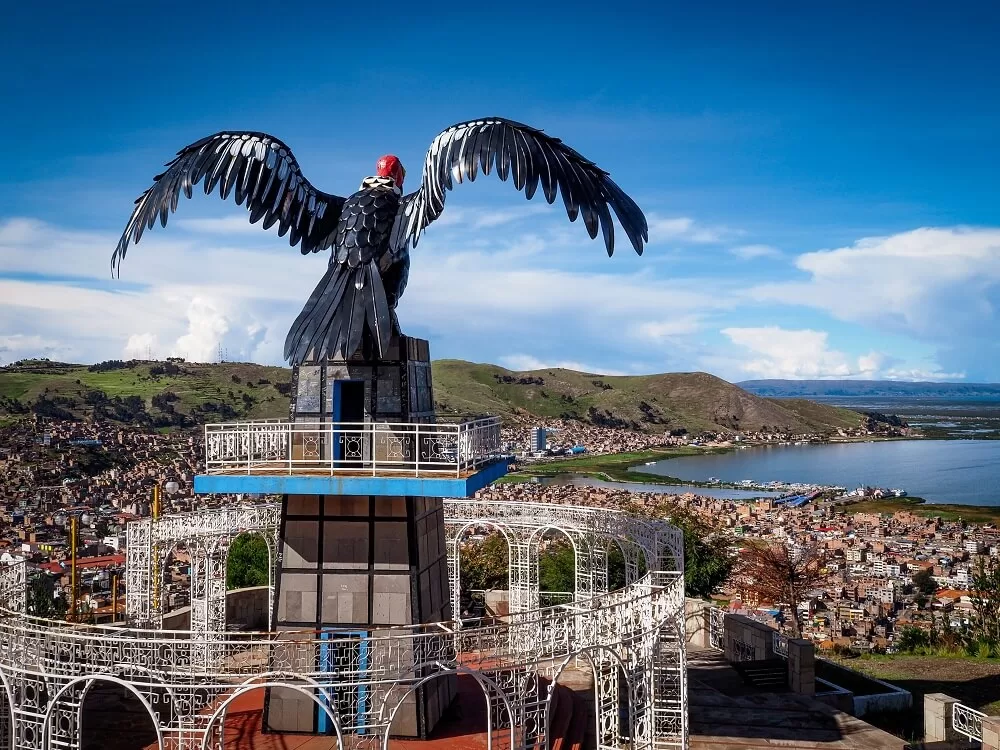
3. Hike Up to Mirador el Condor (Condor Viewpoint)
If you want to test your lungs, then make sure to hike up to a stunning viewpoint called Mirador el Condor. The viewpoint is located at 3,990 m (13,090 ft) above sea level.
It takes a good 20 to 30 minutes from the Main Plaza to reach the viewpoint. Probably the hardest part of this short hike is the number of steps you’ll need to take to get to the top. However, once you’re up there, you’ll be treated with some pretty epic views of the entire city of Puno and Lake Titicaca.
Apart from the views, you can also check out the impressive 11 m tall Condor monument that was built in tribute to the Andean Condor, one of the sacred animals of the Inca.
Top Tip – Make sure to bring some water with you!
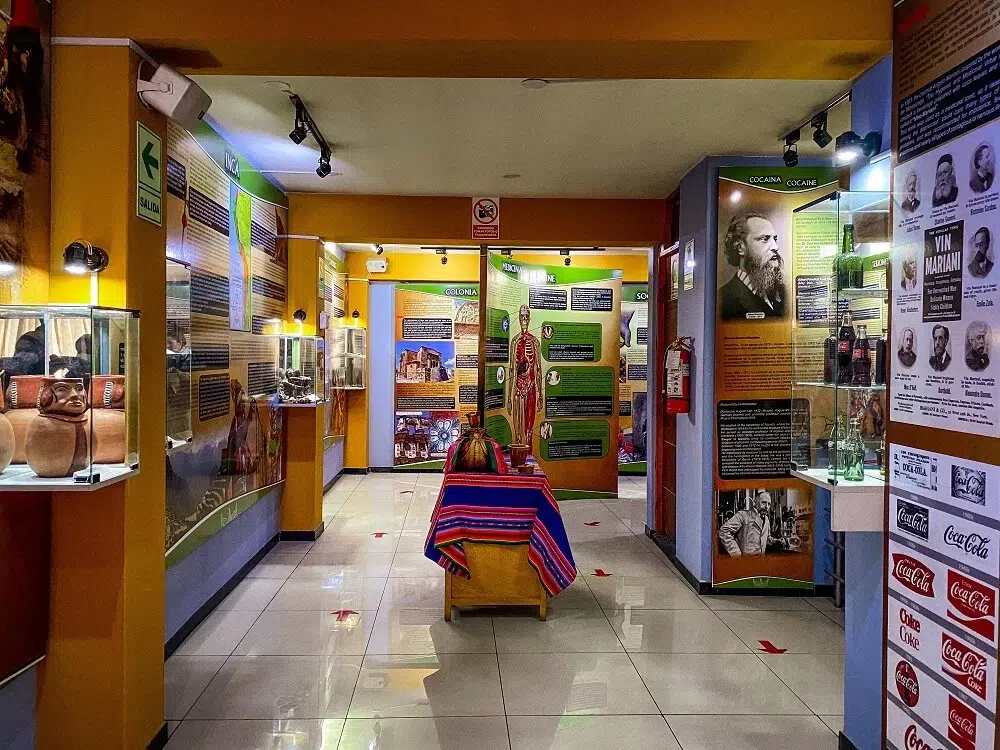
4. Learn About the Coca Plant in the Coca Museum & Customs
If you’ve been to any other parts of the Andes before visiting Puno, chances are that you’ve been offered coca leaves or coca tea. You might be curious to learn a bit more about this plant that apparently helps with altitude sickness. If that’s the case, then make sure to visit the Coca Museum & Customs in Puno.
Although it’s a tiny museum, it actually has a lot of historical, cultural and also medical information about the coca plant. Without giving too much away, we learnt that the coca plant is the source of cocaine and the de-cocainized version is used in the flavouring of the well-known Coca-Cola drink.
The absolute bonus of this museum is that a small part of it is actually dedicated to local customs. You can watch videos on local dances and costumes that people wear during the famous Fiesta de la Candelaria. You can even try on a few of these incredibly heavy outfits, which makes you appreciate people wearing and dancing in them all day long.
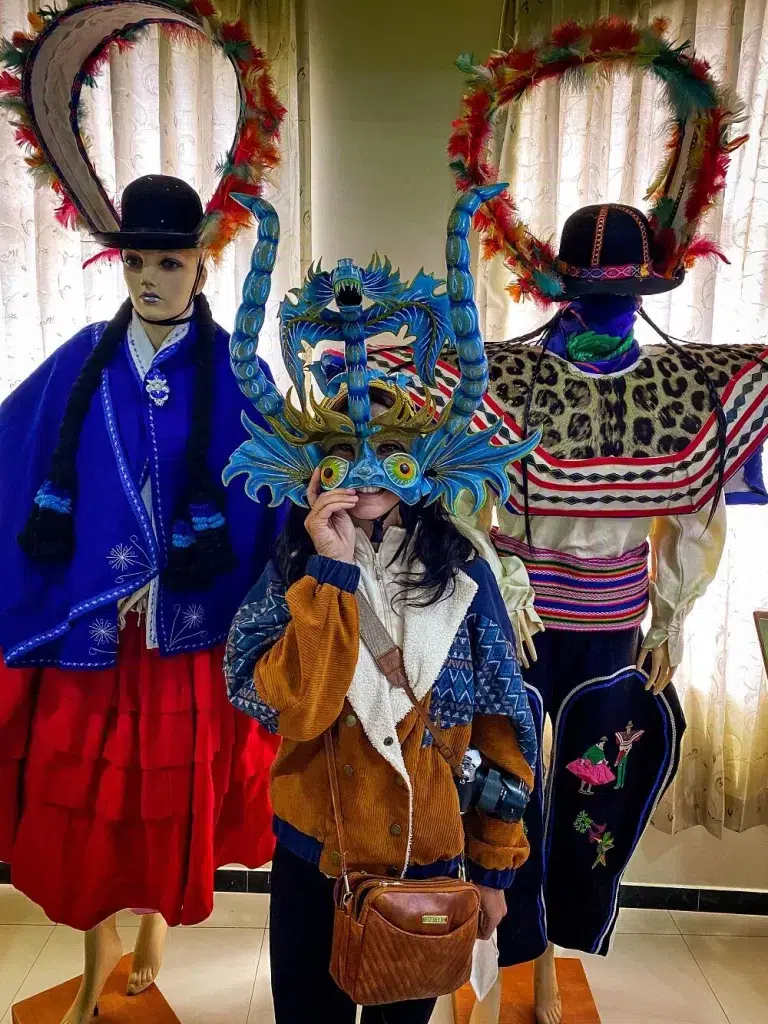
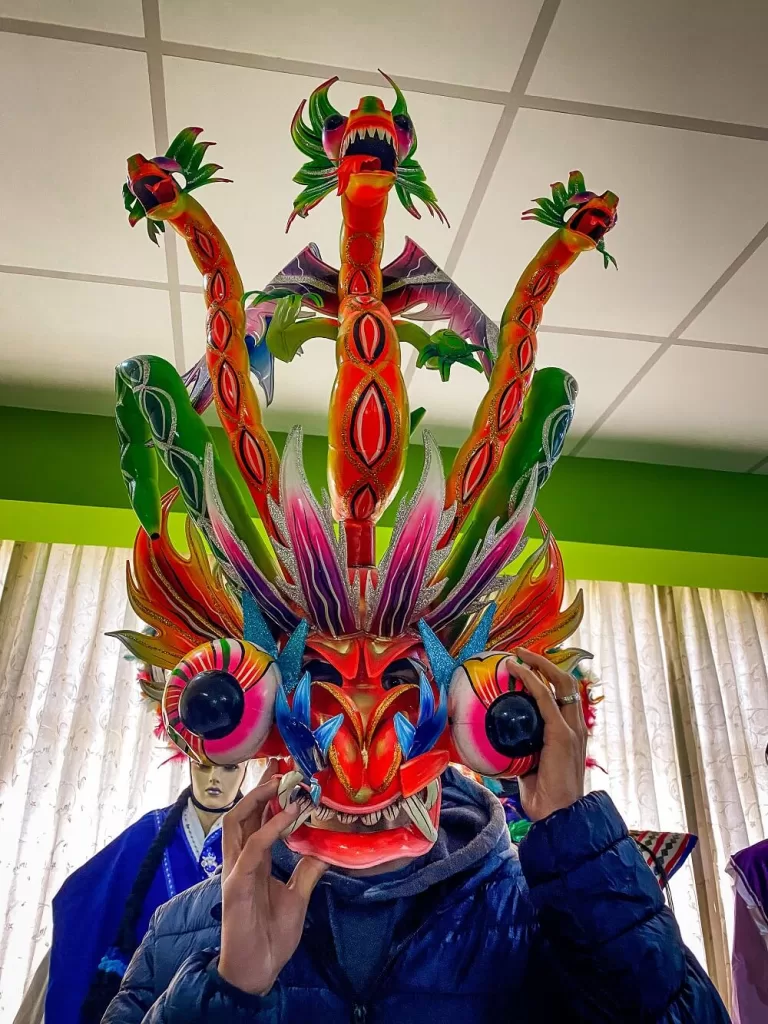
5. Visit Puno During the Fiesta de la Candelaria
If you love traditions and festivals then you should consider timing your visit to Puno in February. That’s when one of the best festivals in South America, called Fiesta de la Candelaria, takes places.
The festival brings together the Catholic and Andean religions to celebrate the Virgin of Candelaria, who is the patron saint of Puno and is also associated with Mother Earth (Pachamama). During the two-week long festival Puno is filled with thousands of dancers and musicians who dance and drink all day long.
In 2014 the festival was declared a UNESCO Intangible Cultural Heritage of Humanity.
Top Tip – Make sure you book your accommodation way ahead of time if you’re coming to this festival as places get sold out very quickly.
Even if you’re not visiting in February, you can get a taste of what the festival is like at the Coca Museum. You can watch some videos explaining a bit more about the festival, as well as all the different costumes and dance movements. As a bonus, you can even try on some of the traditional dresses which is great fun.
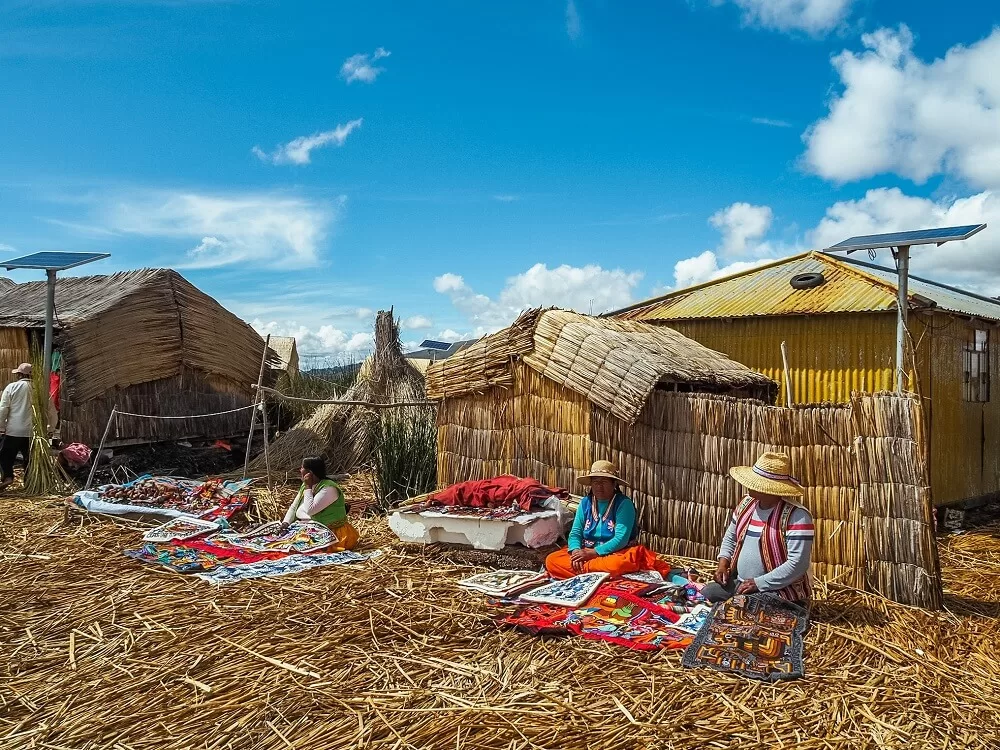
6. Visit the Uros Islands
Visiting the floating islands of Uros is definitely the No.1 reason many tourists come to Puno. There are many day or multi-day trips from Puno you can choose from to visit these unique islands.
During your visit you’ll learn how the islands are made, how they float, how they maintain them and what it’s like to live on them.
The floating islands are home to the indigenous Uros people who built these islands to protect themselves from invaders. In case of a potential attack, they could just move the islands to other parts of Lake Titicaca.
Pretty much everything you see on the islands, including the islands themselves, the cool looking boats, the houses, the beds, everything is made from the water-resistant totora reeds. People even eat the reeds and use them as medicine.
Today there are about 120 of these floating islands, with around 1,200 people living on them. Locals earn income from fishing and tourism. They’ve definitely adapted to modern technologies though, so don’t be surprised to see phones, solar panels and tv’s.
Top Tip – Make sure to bring some cash with you because locals normally display their handicrafts that you can purchase.
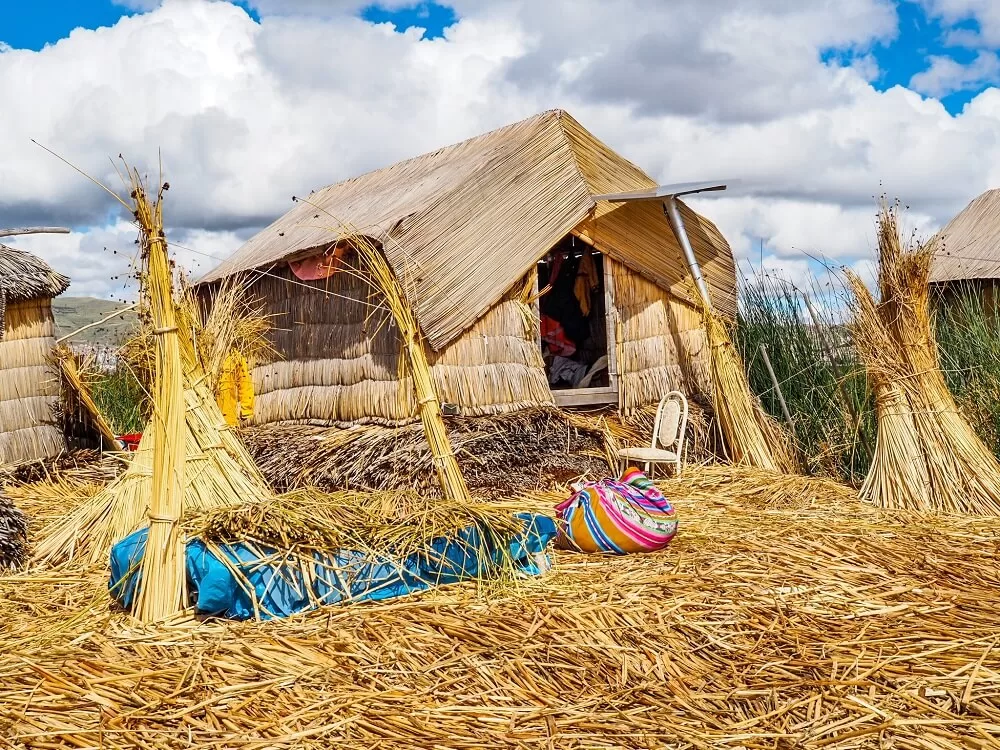
7. Spend a Night on the Uros Islands
If you want to make your visit to Uros extra special, then you can consider spending a night on one of the floating islands.
You can stay in a local, family operated lodge and get a glimpse into their day to day lives. We saw a few of these accommodations on the island we landed on as part of our tour. They are actually really beautiful and more luxurious than we imagined.
There are quite a few different lodges you can book for a night (or more).
8. Kayak on Lake Titicaca
The good news for all you water sports lovers is that kayaking on Lake Titicaca is a very popular thing to do in Puno.
It’s definitely a unique way to visit the Uros floating islands on Lake Titicaca. Depending on the tour you book, you’ll be kayaking from Puno out to the floating islands. During your trip you’ll get up close with the totora reeds and learn more about the way the Uros people make their islands.
Then you’ll have the chance to set foot on one of these islands and see people’s homes before kayaking back to Puno.
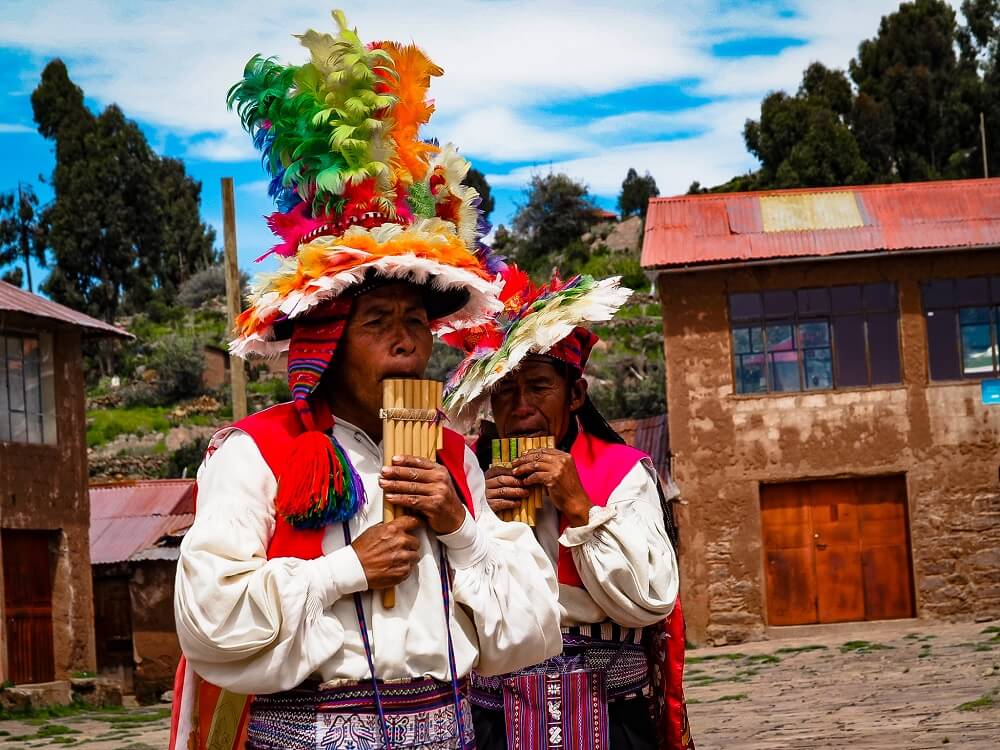
9. Day Trip to Taquile Island
Whilst the floating islands of Uros are the most popular place to visit on Lake Titicaca, there are a few stunning islands on this massive body of water that you can consider visiting too.
One of them is Taquile Island, which is located about a 2.5 hour boat ride away from Puno. Only about 2,200 people live on the 5.72 sq km (2.2 sq mi) island. The island is beautiful, with steep slopes and stunning views of Lake Titicaca. There are no roads or cars on the island, so it’s also very peaceful and you’ll feel a bit like time has stopped there.
Taquile is most famous for its weaving techniques. The unique twist is that men, not women, do the weaving on Taquile. They learn to weave from childhood and each of their designs and colours has a different meaning. For this reason, Taquile became a UNESCO World Heritage Site in 2008.
Top Tip – Whilst many day trips only offer a visit to Taquile Island, you can book a homestay as well. If you have the time to spare, you can see and learn a lot more about this part of Peru by staying a night with a local family.
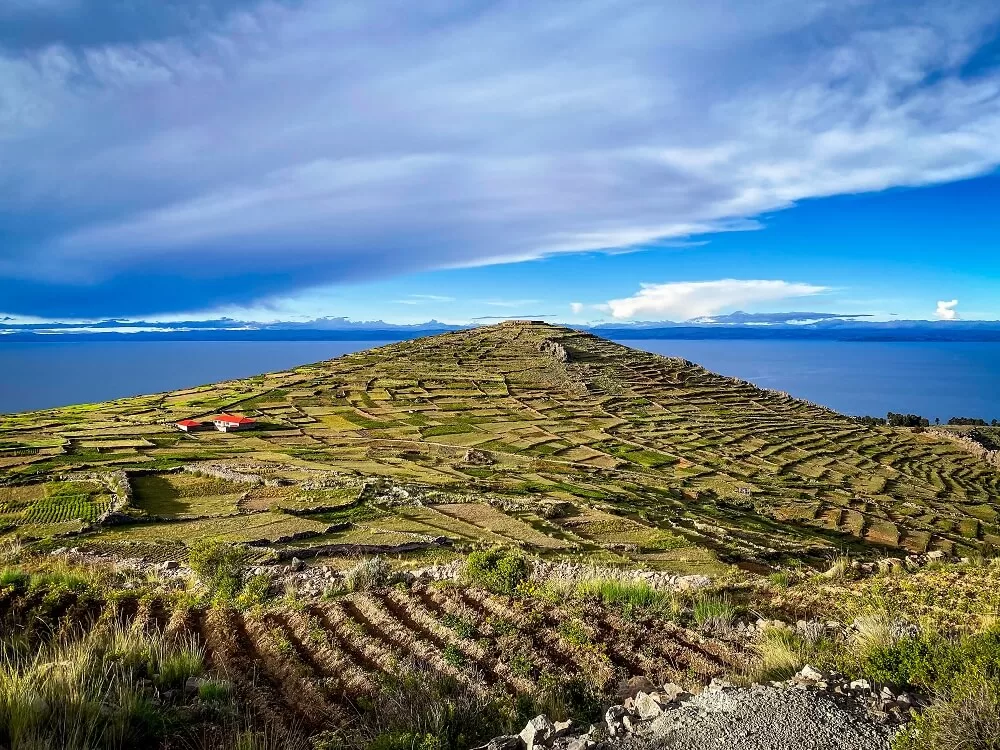
10. Stay with a Local Family on Amantaní Island
Our absolute favourite thing to do in Puno and Lake Titicaca was to book a homestay with one of the local families living on Amantani Island.
About Amantani Island
The island is located about 40 km (25 mi) away from Puno and it takes a good 2.5-3 hours to reach it by boat. The population of Amantani is around 3,600 of Quechua origin. The size of this circular island is around 9.28 sq km (3.58 sq mi). There are two mountain peaks on the island called Pachamama (mother earth) and Pachatata (father earth). On top of both peaks there are ancient Tiwanaku and Inca ruins.
The island is very quiet and peaceful. There are no roads or vehicles or streetlights. People are mainly farmers and the most popular crops they grow are Andean potatoes, quinoa, barley and green beans.
Isla Amantani is probably the least visited island on Lake Titicaca. You’ll quickly notice that most day-tours will include a trip to Taquile Island but won’t necessarily go to Amantani as well. This is because most tours offering a visit to Amantani are actually overnight homestay ones with a local family. Since not many tourists spend that long in Puno, most of them will just visit the Uros Islands and Taquile.
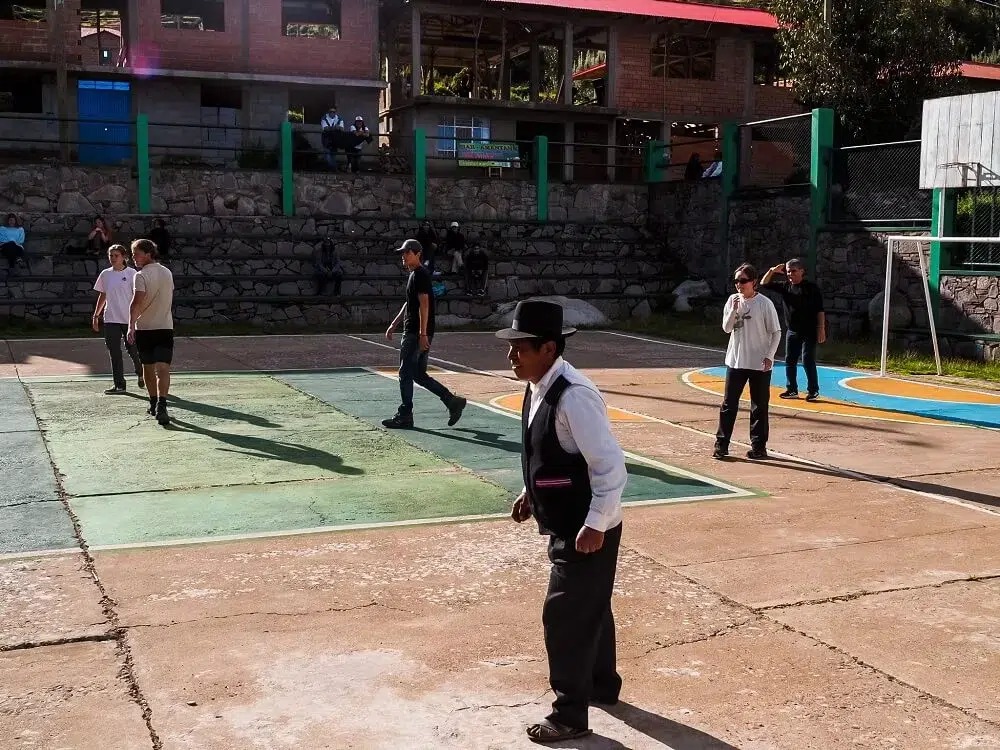
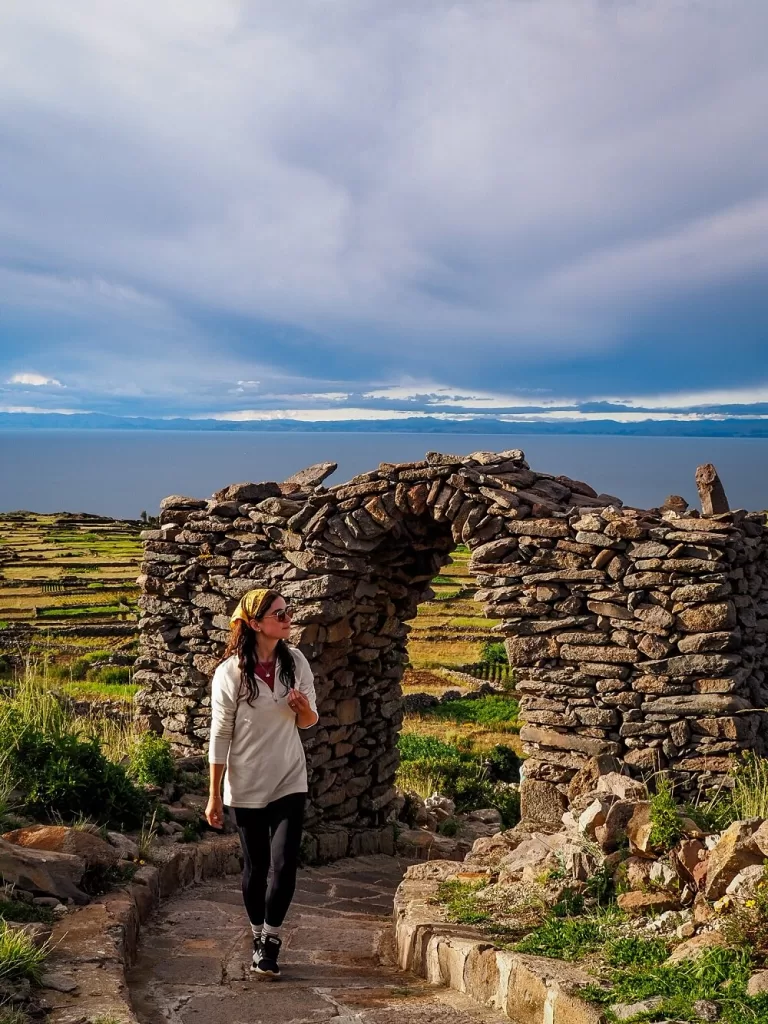
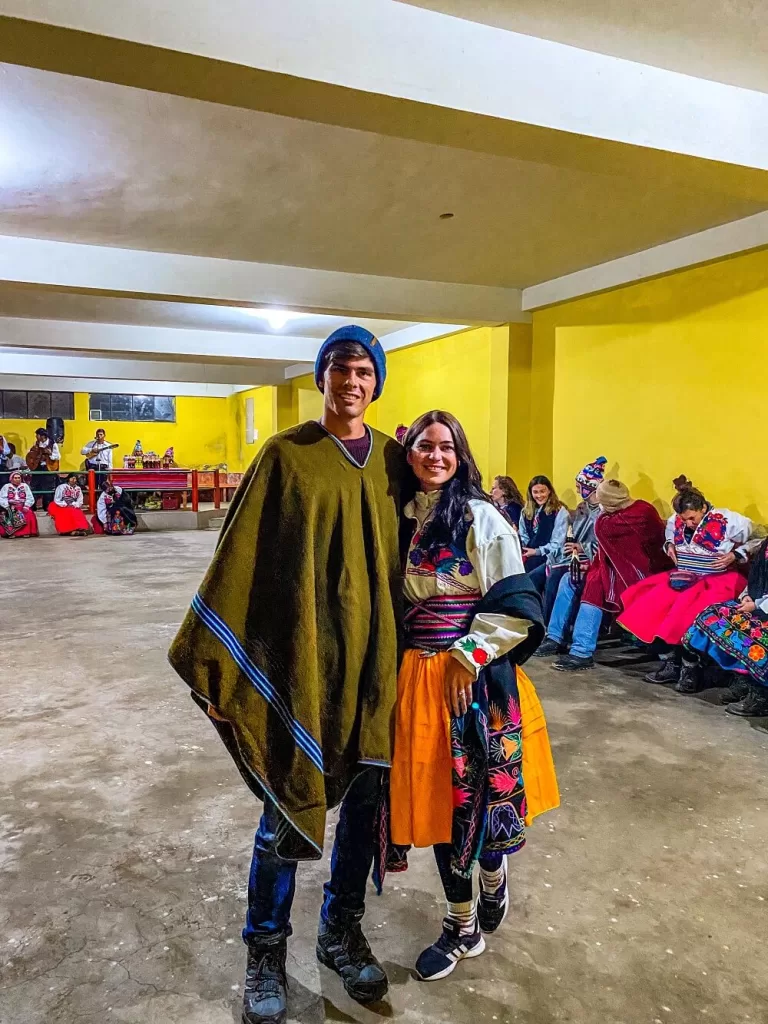
About the Amantani Island Homestay
Due to its distance from Puno and it being less popular than other islands, tourism hasn’t grown as much on Amantani, which actually allows you to have a more authentic cultural experience.
Luckily, a homestay tour will normally include a trip to the Uros Islands before you reach Amantani. The next day you’ll also visit Taquile Island as well so, all-in-all, you’ll get to experience all the popular things to do on Lake Titicaca through one tour.
During your homestay, you’ll see what it’s really like to live on such a remote island. You’ll share meals with your hosts, play football or volleyball with them and go on a hike to some ancient ruins with jaw-dropping views of your surroundings.
The families are very welcoming and enjoy having a chat with you. We encourage you to learn a few facts about yourself in Spanish before you go and also try to ask about their daily life on Amantani.
At night they’ll dress you up in their traditional outfits and you’ll dance the night away to their traditional Andean music. You’ll quickly learn to appreciate just how fit the elderly residents are whilst you’re trying to catch your breath dancing at 4,000m (13,123 ft).
Life on the island is very basic, especially when you compare it to the much more luxurious lodges you can stay at on the Uros Islands. But that’s what we enjoyed the most about our experience there.
11. See the Sillustani Burial Towers
If you still have a bit of time to spare during your visit to Puno and Lake Titicaca, then we recommend taking a tour to the Sillustani Burial Towers.
They are located about 35 km (20 mi) to the northwest of Puno, overlooking Lake Umayo. The site consists of tower-like tombs that were built by the Qulla (or Kolla) culture. They were Aymara speaking people living in this region before the Incas arrived.
They buried their leaders with their families in these towers, along with food and offerings. These tall funeral towers are called ‘chullpas’ and are considered some of the best preserved ones in the area.
To visit the site, you can just take a half-day tour from Puno.
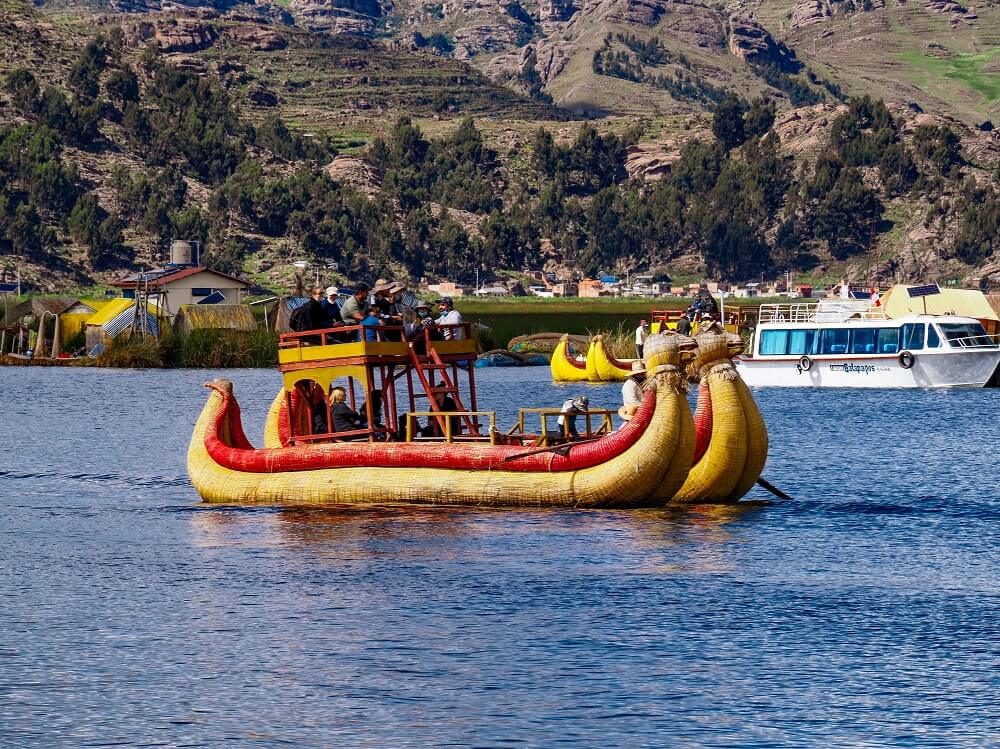
How to Get to Puno and Lake Titicaca in Peru
Peru Hop
If you’re on a south of Peru tour, then booking a Peru Hop bus pass might be a great option for you. It’s a safe and favoured bus company by many and has lots of perks which you can read about in our bus guide to Peru. Peru Hop buses normally travel from Lima to Paracas, then to Huacachina in one day. The bus leaves Huacachina the next day to Nazca, where you can get an overnight bus to Arequipa to visit the Colca Canyon. From Arequipa, you can travel to Puno on an early morning bus and would arrive just before lunchtime.
Top Tip. You can also reach Puno from Bolivia (either from La Paz or from Copacabana) using PeruHop. Many travellers enter or leave Peru this way, so you can always check it out if you’re on a backpacking trip around South America.
Public Bus
If you’re not travelling with Peru Hop, then you can take a public bus to Puno too. Bus companies such as Cruz del Sur or Civa provide services from places like Lima, Cusco or Arequipa. The tickets cost anywhere between £13 to £40 ($US 25-50) depending on the time and bus company you pick.
Note– It takes around 6.5 to 7 hours to reach Puno from Arequipa or Cusco. You’ll likely be travelling on an overnight bus and get to your destination very early in the morning. The Lima to Puno journey takes over a day, so we recommend breaking that up if you can. You can buy your ticket online or at the bus station. Note that your bus might leave from a different terminal depending on the bus company.
You can find bus routes and companies operating to and from your next destination on these websites: Busbud.com, and Rome2Rio.
Top Tip. You can also reach Puno from Bolivia (either from La Paz or from Copacabana) using public buses. Many travellers enter or leave Peru this way, so you can always check it out if you’re on a backpacking trip around South America.
Read our detailed guide on how to travel by bus in Peru.
By Train
If you’re coming from Cusco, you can actually opt to travel by train. This is going to be the most expensive way to reach Puno and won’t be a quick journey either. However, it will definitely be a scenic ride and a unique experience overall.
Perurail Titicaca departs around 3 days a week from Cusco to Puno. You can also travel on the Belmond Andean Explorer which leaves only once per week from Cusco. You can read more about this option here.
By Plane
The closest airport to Puno is in Juliaca called Inca Manco Capac International Airport. It is about an hour’s drive away from Puno. You can only fly direct from Lima or Cusco. From there you’ll still need to take a local bus to Puno.
Find Flights to Puno✈️
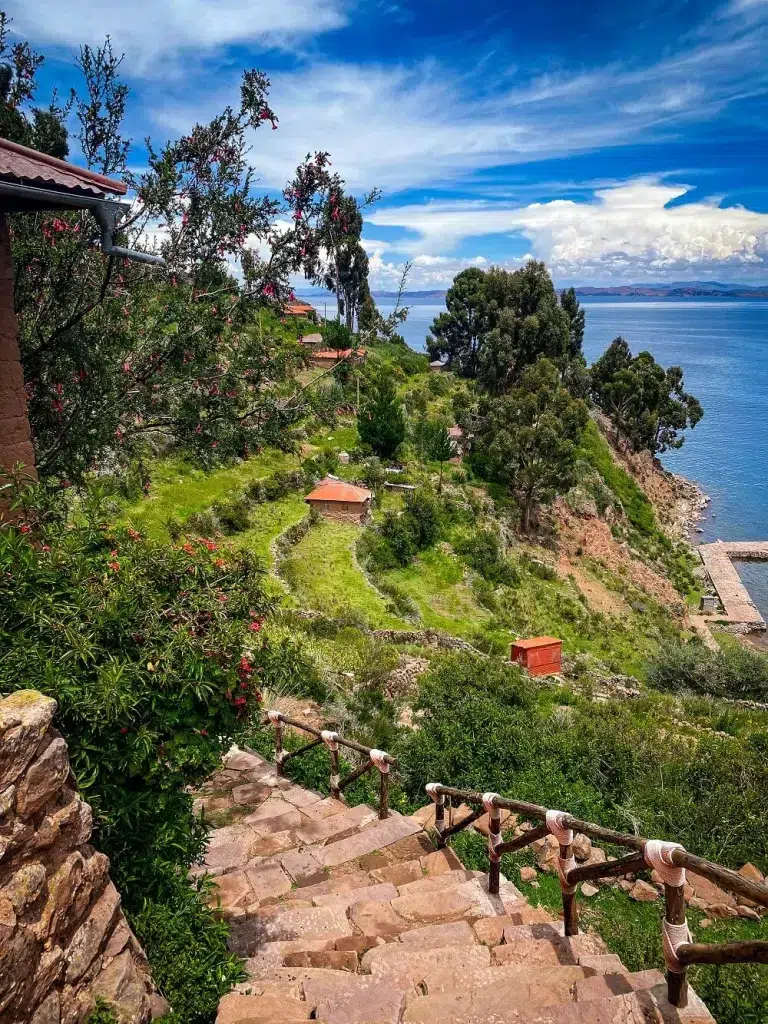
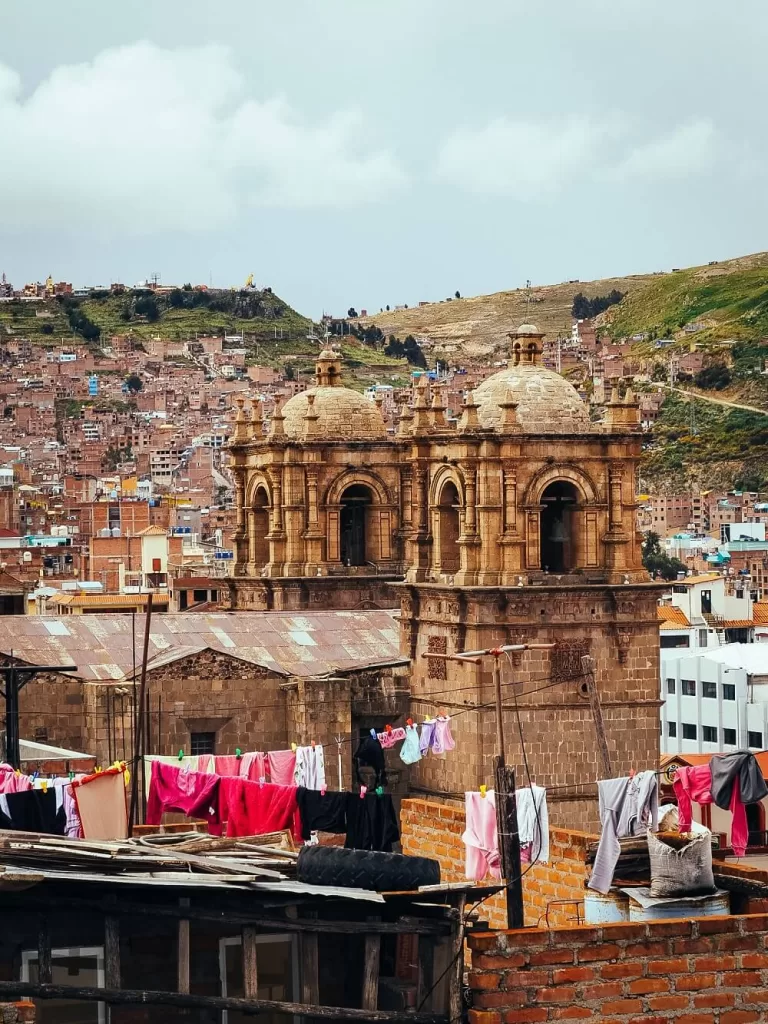
Best Time to Visit Puno and Lake Titicaca, Peru
For the best weather, time your visit to Puno between April and October. The warmest months are October, November and December. The least rain is expected in May, June and July.
However, if you want to be there for some local festivals, then make sure to visit in January and February. It’s worth noting though that Puno is very busy during the festive periods, so make sure to pre-book your accommodation.
How Long Do You Need in Puno, Peru
One Day. If you don’t have much time, but still want to see Lake Titicaca, then you can arrive to Puno in the morning, go on a short Lake Titicaca tour and then head to your next stop on a night bus. This way you don’t even have to spend a night in Puno. Just bear in mind that it’ll be a very long day with multiple nights spent on a bus.
One Night. If you have a bit longer, then you should stay at least a night in Puno. That way, you can have a wonder around the city and also spend a full day on Lake Titicaca. This will allow you to visit Taquile Island and not just the Uros Islands. Spending a night in Puno will also be less tiring and a good way to acclimatise to higher altitude, especially if you’re heading to Cusco or hiking the Salkantay Trek.
Two or more nights. Of course, we definitely recommend spending a little longer in Puno if you can. That way you can go on a two-day tour on Lake Titicaca and spend a night with a local family. We had the most amazing time with our host family on Amantani Island, learning about how they live their lives, hiking on the island and wearing their traditional dresses for a dance party with the entire village.
If you want a unique and perhaps more luxurious experience, then you can even book a night on the Uros Islands. The accommodations are really beautiful, so you’re guaranteed an unforgettable night.
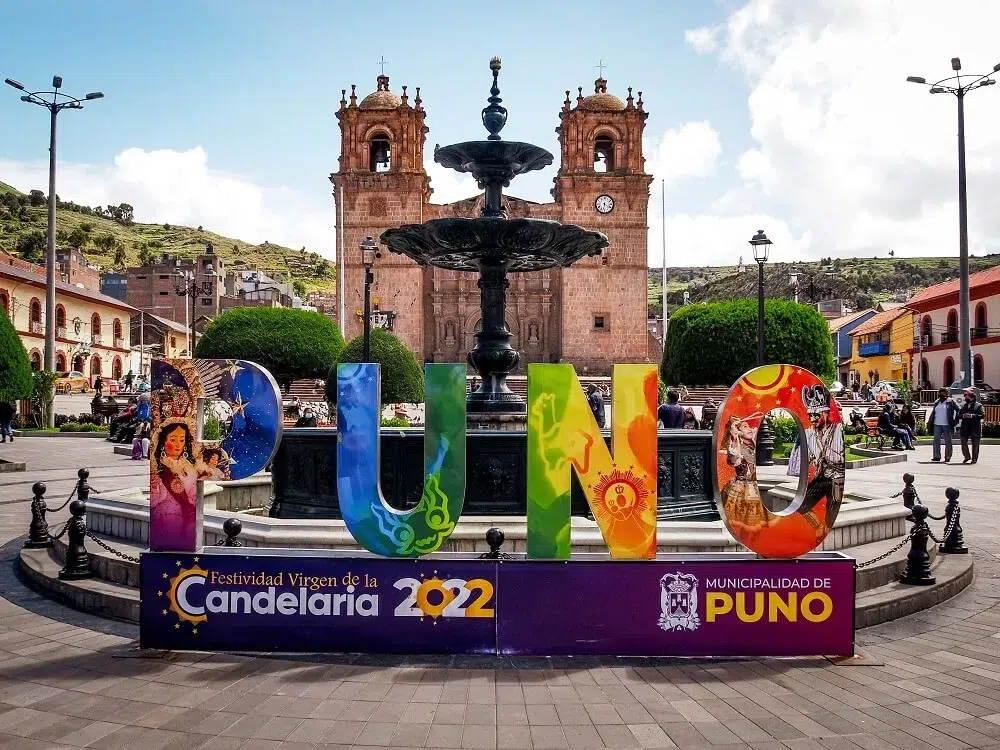
Puno Travel Tips
Altitude. Puno sits 3,827m (12,555 ft) above sea level, so you can get altitude sickness. If you’re arriving from Arequipa and hiked in the Colca Canyon, then you’ve probably acclimatised to the altitude already. However, if you’re coming from the coastal areas of Peru, then you may or may not get altitude sickness. There are many symptoms of altitude sickness, including dehydration, dizziness, headaches, shortness of breath and heavy breathing, loss of appetite, nausea and vomiting. Anyone can develop altitude sickness and its symptoms can be less or more severe.
Top Tip – Make sure to buy altitude sickness tablets before you head to Puno. The city is probably one of the highest places tourists will stay during their trip to Peru. It’s definitely a great place to prepare your lungs for high altitude hikes in Peru.
Earthquakes. Peru is in an active earthquake zone, therefore there are frequent tremors. You may or may not experience an earthquake during your stay. However, we recommend reading the US Federal Emergency Management Agency’s advice about what to do before, during and after an earthquake.
Tap Water. We don’t recommend drinking tap water in Puno, or anywhere in Peru for that matter. You can always boil your water or use a filtered water bottle if you want to be a more responsible traveller and reduce your plastic waste.
Personal safety. Whilst we felt completely safe walking around the city, make sure to stay vigilant. Also, try not to walk at night on your own outside of the touristy areas.
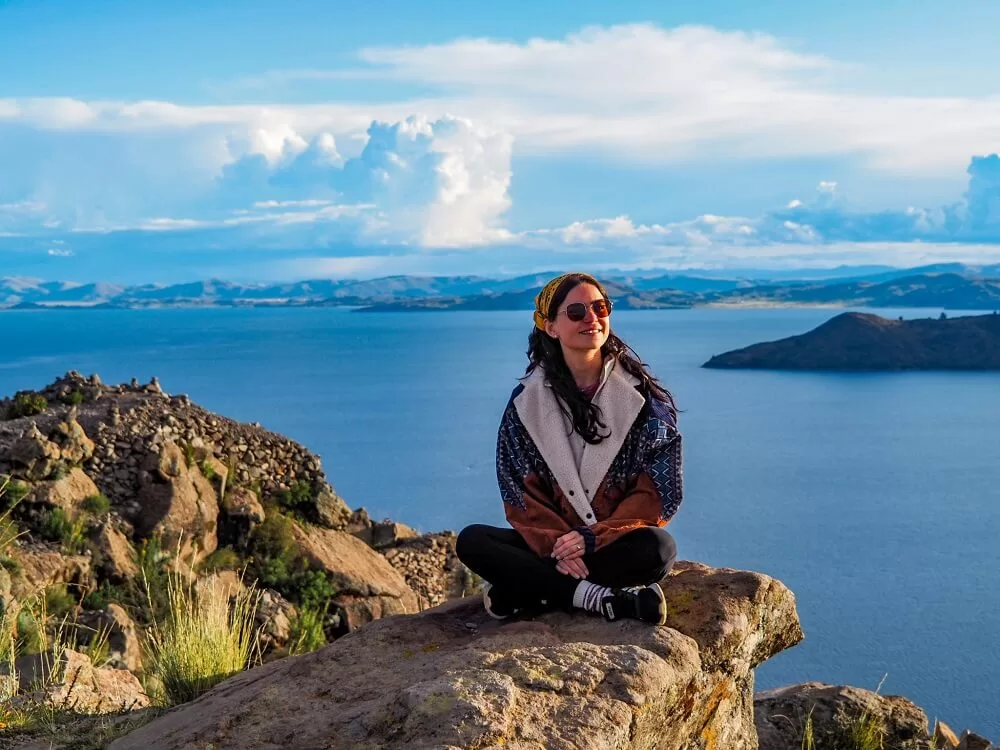
Final Thoughts on Things to Do in Puno
Visiting Lake Titicaca and the Uros Islands had been on my bucket list since I first learnt about this place at school. After our visit, we can safely say that Lake Titicaca is definitely worth adding to anyone’s Peru itinerary.
Booking a homestay on Amantani Island was also the best decision we made. We had a fantastic time with our host family and will never forget this experience. It definitely became one of our favourite memories from Peru.
Have you ever been to Puno and Lake Titicaca before? How long did you stay for? What was your experience? If not, would you add Puno and Lake Titicaca onto your bucket list? Let me know in the comments below.
Now, let your adventure begin,

Our Top Travel Resources
Accommodation: For hotels we always use Booking.com and Hostelworld for hostels. We also book longer stays on Airbnb or Vrbo.
Flights: To find the best flight prices we always check Skyscanner, Google Flights or WayAway. Then we also check the airlines’ websites too for comparison.
Car Rentals: We use Discover Cars when we want to rent a car as it compares local, national and international companies.
Activities: If we book organised tours we always check either GetYourGuide or Viator.
Foreign Currency: Whenever we can we prefer to pay in local currency and for that we always use our Wise card. We can easily withdraw money from the ATM or pay by card at most shops and restaurants.
Travel Insurance: We never go anywhere without travel insurance. You never know what will happen on your trip, so good travel insurance like SafetyWing can protect you in case of injury, illness, theft and cancellations.
eSIM and VPN: To get data abroad we use Airalo which is an app that allows you to download a prepaid eSIM to your phone in over 190 countries. Make sure to have a VPN to avoid hackers accessing your personal data when using public WIFI. We use Surfshark which is the only VPN that offers one account on unlimited devices.
Remember…It all starts with a Pin…
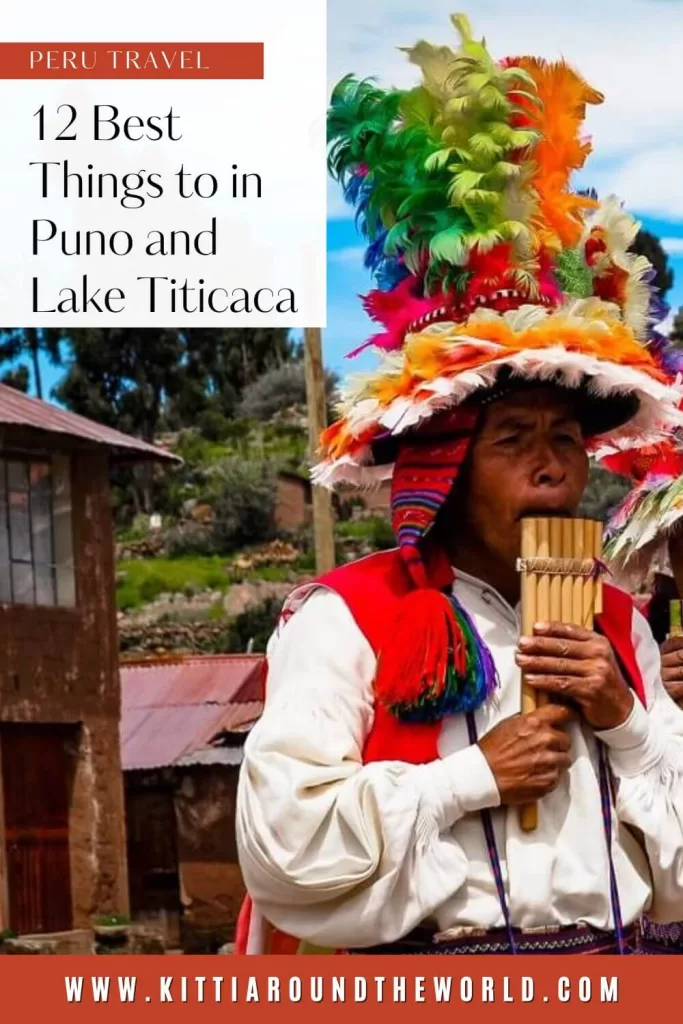
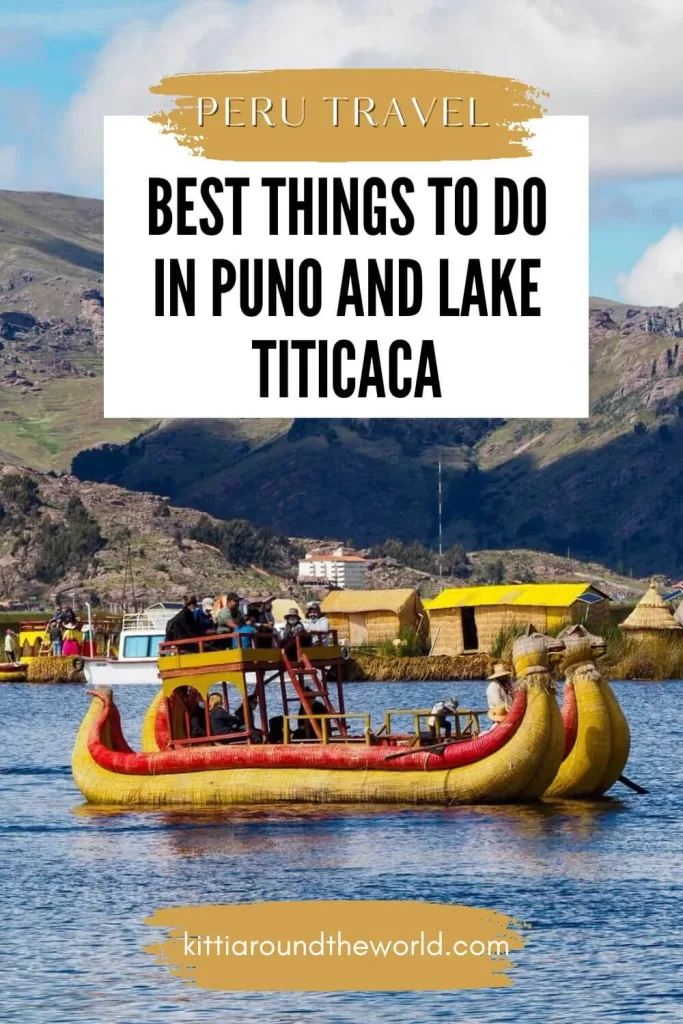

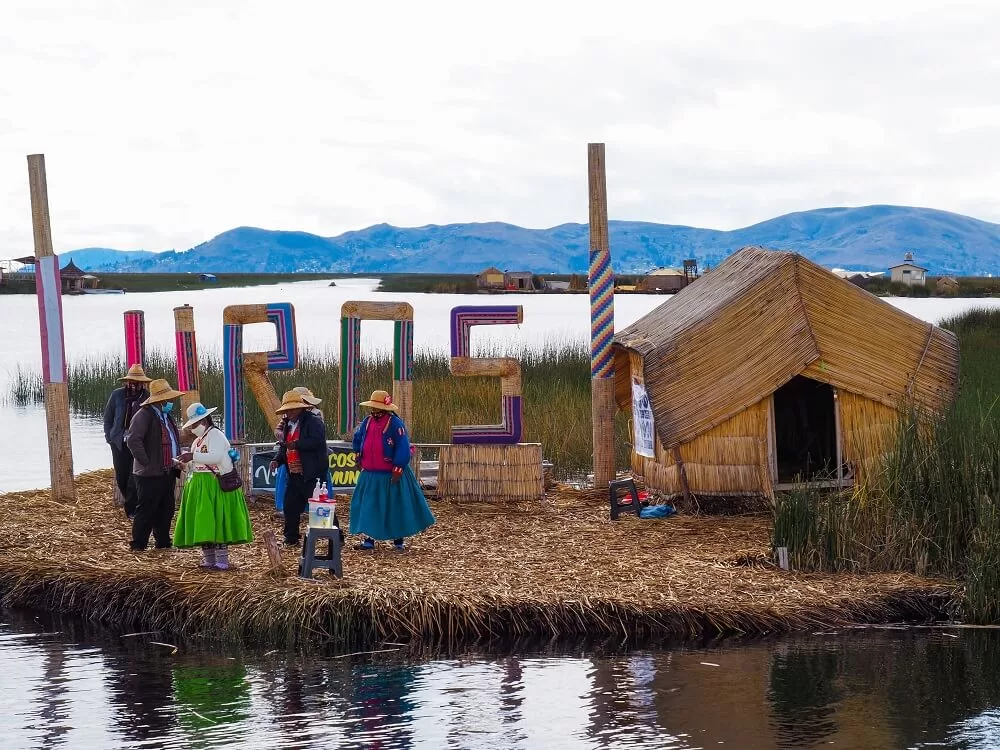
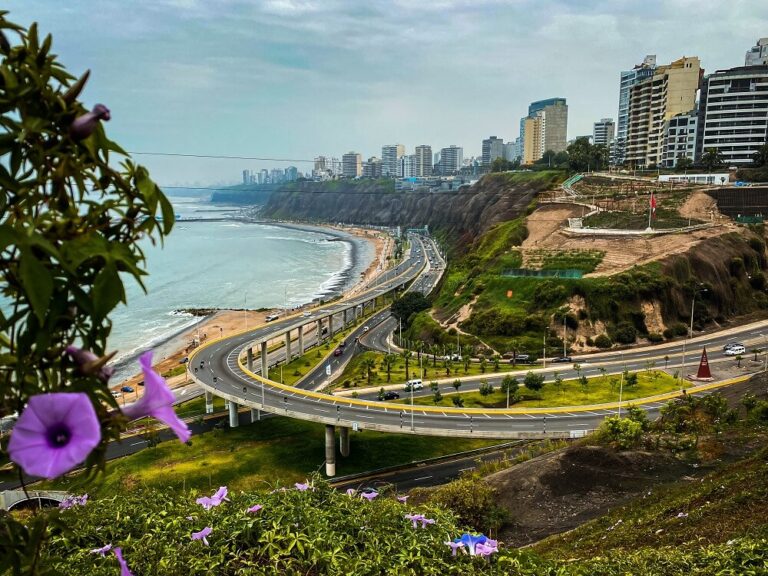
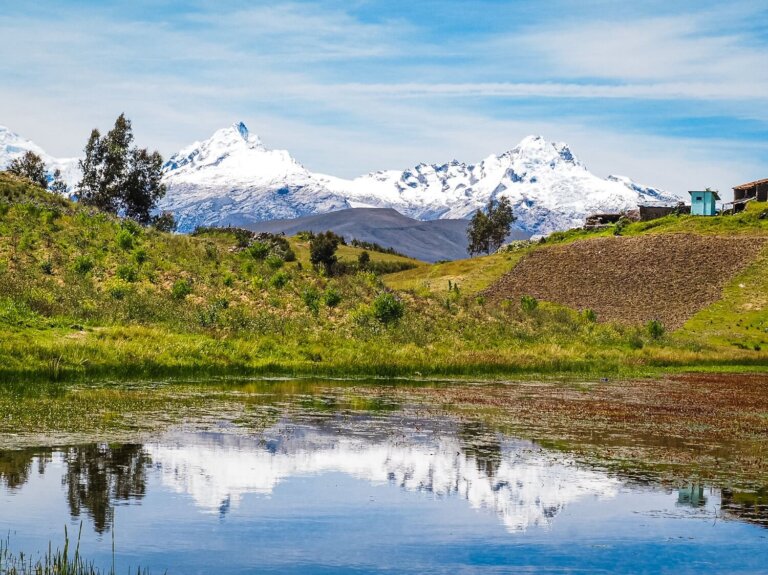
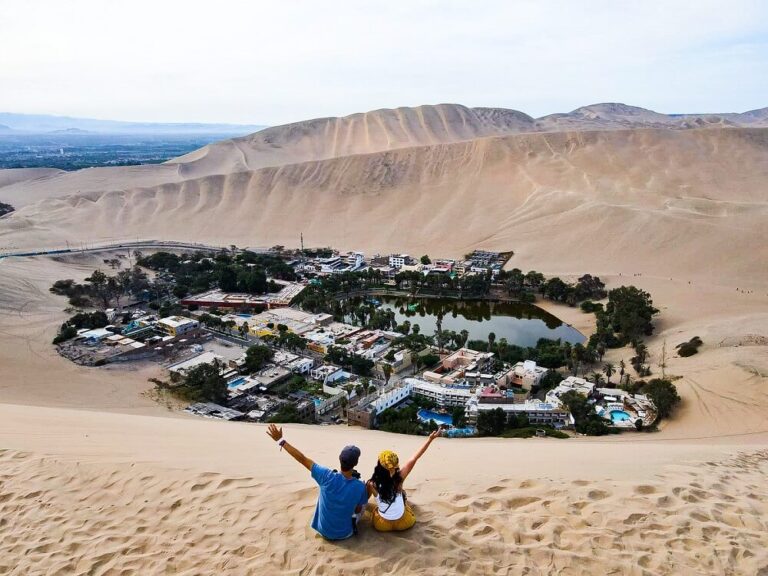
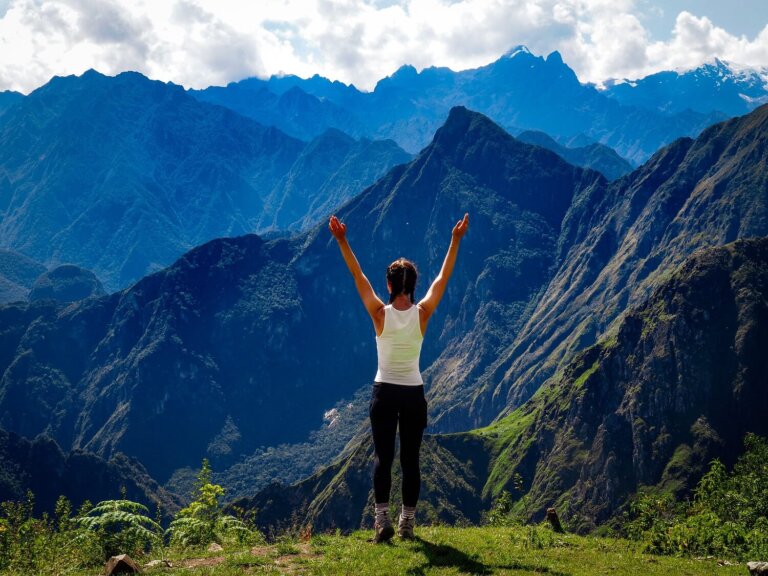
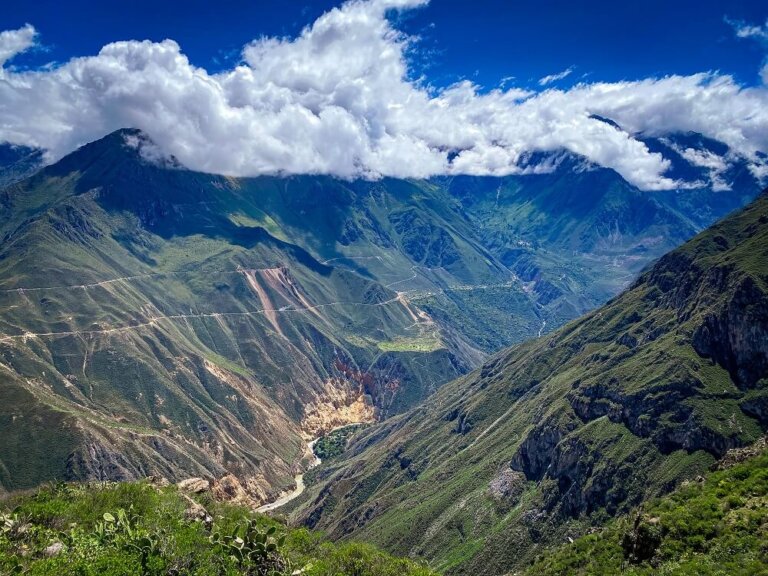
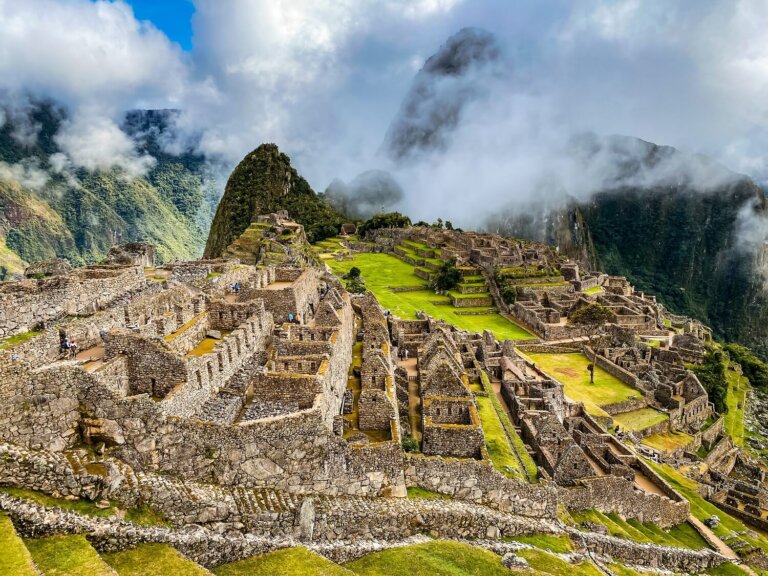
I’m so bummed we missed Lake Titicaca when I was in Bolivia, and again when I was in Peru lol But I will make it there! My fiance wants to go to Bolivia, so we will probably visit the lake on our next visit. Thanks for sharing all these things to do!
I’m sorry you didn’t have the chance to visit Lake Titicaca before. But at least it gives you a good reason to return. I’m sure you’ll love this area, it’s so beautiful.
Wow – what a colourful place. Your images are gorgeous and activity descriptions so helpful! The homestay option sounds like an incredible way to connect with the culture!
Thank you so much Tracy, I’m glad you liked our photos. Lake Titicaca is indeed a colourful place and we cannot recommend the homestay on Amantani Island enough.
I love how much history and culture there is here! The floating islands just blow my mind, Id certainly want to stay here for at least a few days so I could visit everything. Thanks for the travel tips too, I never would have even thought about the altitude sickness. This is now on my bucketlist for my trip to Peru!
Thank you Charlie we’re glad you found our post useful. We really loved learning about how they make the floating islands. It’s pretty amazing.
We were sad that our trip to Peru got interrupted by the pandemic. But we are collecting a list to things to plan when we finally get this re-scheduled. We would love to visit Puno and Lake Titicaca. I love the variety in the things to see and do. And that view from the Condor Viewpoint looks stunning. Worth a good cardio workout.
I’m sorry to hear that your trip in Peru got interrupted. We visited just after the pandemic and were so grateful that we could experience Lake Titicaca and the rest of Peru without issues. I hope you can return soon and will have an amazing trip!
What a colourful and interesting place Peru is! Lake Titicaca and it’s islands are a must on a visit to the country. I loved the fact that you spent a bit longer there and connected with the islanders too.
These photos are lovely! And good to know about the elevation there! I would love to visit here someday. Peru is so high on my bucketlist
Thank you Melissa, we’re happy to hear that you found our post helpful. Hope you can visit Peru in the near future.